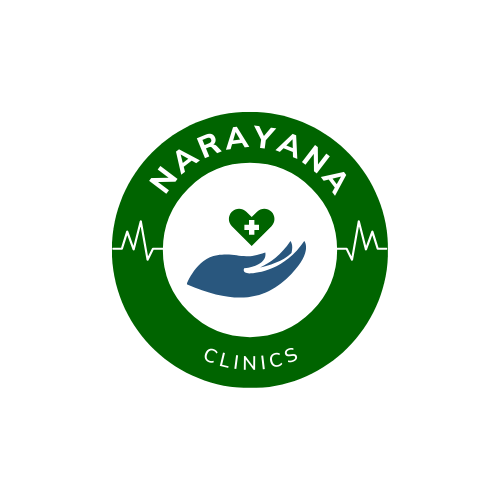Diet Therapy
method of using food and nutrition to maintain health, manage illnesses, and promote healing. It is often used as part of an integrative treatment approach in both traditional medicine and modern healthcare practices. The goal is to tailor a diet according to an individual’s health condition, body constitution, and nutritional needs. This therapy can help manage chronic diseases, improve digestion, detoxify the body, boost immunity, and achieve balanced nutrition.

Detailed Procedure of Diet Therapy
Following steps outline the general process and principles behind Diet Therapy:
1. Assessment of Nutritional Status and Health Conditions
The first step in Diet Therapy involves evaluating an individual’s nutritional and health status. This is done through various methods:
a) Clinical Assessment:
- Medical History: Review of the individual’s health problems (e.g., diabetes, hypertension, gastrointestinal issues, etc.), family history, lifestyle habits, and previous treatments.
- Current Medications: Analysis of ongoing medication, as some drugs may affect nutrient absorption or cause deficiencies.
b) Anthropometric Measurements:
- Measurements of body weight, height, Body Mass Index (BMI), waist circumference, and other factors help evaluate nutritional status.
c) Dietary Intake:
- Diet History: Detailed analysis of the person’s regular food intake, including meal patterns, portion sizes, frequency, and timing.
- Nutrient Deficiencies: Identifying any potential vitamin or mineral deficiencies through food habits or blood tests (e.g., iron, calcium, vitamin D levels).
d) Laboratory Tests:
- Blood tests to check cholesterol levels, blood sugar, kidney and liver function, and other markers that may indicate the need for dietary modification.
2. Individualized Diet Planning
Based on the health assessment, a diet plan is created to address the specific needs of the individual. The plan is designed to:
- Meet the body’s caloric and nutritional requirements.
- Manage or improve health conditions.
- Provide balanced macronutrients (carbohydrates, proteins, fats) and micronutrients (vitamins, minerals).
a) General Diet Principles:
- Balanced Nutrition: Ensure that the diet includes all essential nutrients in appropriate proportions.
- Moderation: Avoid excessive intake of certain foods, especially those high in fat, salt, sugar, or refined carbohydrates.
- Variety: Incorporate different food groups to ensure a wide range of nutrients.
b) Customizing Diet Plans:
Diet plans are tailored according to individual health goals, such as:
- For Weight Loss: A calorie deficit with high-fiber, low-fat, and low-calorie foods such as fruits, vegetables, whole grains, and lean proteins.
- For Diabetes: A low-glycemic diet focusing on complex carbohydrates, balanced with protein and healthy fats to control blood sugar levels.
- For Heart Disease: A heart-healthy diet rich in omega-3 fatty acids, fiber, and antioxidants, and low in saturated fats, trans fats, and cholesterol.
- For Digestive Issues: A diet that includes probiotics (e.g., yogurt, fermented foods) and soluble fiber (e.g., oats, bananas), avoiding foods that irritate the digestive tract (e.g., spicy, fatty, or processed foods).
3. Implementation of Therapeutic Diets
Therapeutic diets are applied to manage or prevent specific health conditions. Here are some key examples:
a) Clear Liquid Diet:
- Purpose: Typically used post-surgery or in cases of digestive issues (e.g., vomiting, diarrhea) to provide hydration and minimal nutrients.
- Foods Included: Water, clear broths, tea, apple juice, gelatin.
b) Full Liquid Diet:
- Purpose: A step up from the clear liquid diet when transitioning to solid foods.
- Foods Included: Milk, smoothies, yogurt, soups, protein shakes.
c) Soft Diet:
- Purpose: Recommended for patients recovering from surgery or with digestive problems to introduce easily digestible solid foods.
- Foods Included: Cooked vegetables, soft fruits, mashed potatoes, scrambled eggs, oatmeal.
d) Low-Sodium Diet:
- Purpose: Used for individuals with hypertension, heart disease, or kidney disorders.
- Foods Included: Fresh fruits and vegetables, whole grains, lean proteins (without added salt).
- Foods to Avoid: Processed foods, canned foods, salty snacks, and preserved meats (e.g., bacon, sausages).
e) High-Protein Diet:
- Purpose: For patients with muscle loss, wounds, burns, or during pregnancy to support growth and repair.
- Foods Included: Lean meats, fish, poultry, eggs, dairy, legumes, tofu.
f) Low-Carbohydrate Diet:
- Purpose: Commonly used for diabetes management or weight loss.
- Foods Included: Non-starchy vegetables, lean protein, healthy fats.
- Foods to Avoid: Sugary foods, refined grains, high-carb vegetables like potatoes and corn.
g) Gluten-Free Diet:
- Purpose: For individuals with celiac disease or gluten sensitivity.
- Foods Included: Gluten-free grains (quinoa, rice, millet), fruits, vegetables, legumes.
- Foods to Avoid: Wheat, barley, rye, and products made from them.
4. Monitoring and Adjustments
Diet Therapy is a dynamic process and requires regular monitoring to assess its effectiveness and make necessary adjustments.
a) Follow-Up Assessments:
- Weight Changes: Tracking weight loss or gain and adjusting caloric intake accordingly.
- Blood Tests: Rechecking biomarkers like blood sugar, cholesterol, or liver function to assess improvements or changes.
- Symptoms: Evaluating how the patient feels (e.g., energy levels, digestive comfort, mood) to see if the diet is achieving its desired effect.
b) Modifying the Diet:
- Refinement of Macronutrient Ratios: Adjusting carbohydrates, fats, and proteins as needed.
- Addressing New Symptoms: If the individual develops any new issues (e.g., bloating, headaches, fatigue), the diet may be tweaked further.
5. Education and Counseling
For Diet Therapy to be successful, educating the patient on proper nutrition is essential. This may include:
a) Meal Planning:
- Teaching the individual how to plan balanced meals, shop for the right foods, and prepare them healthily.
- Providing simple, practical recipes that suit the therapeutic diet.
b) Portion Control:
- Guiding patients on understanding appropriate portion sizes and reading food labels to avoid hidden sugars, fats, or sodium.
c) Behavioral Strategies:
- Helping individuals recognize emotional eating patterns, binge eating, or cravings, and providing strategies to handle these.
- Emphasizing mindful eating techniques.
6. Special Considerations in Diet Therapy
a) Cultural and Ethical Preferences:
- Respecting cultural food preferences, religious restrictions (e.g., halal, kosher), or ethical choices like vegetarianism or veganism.
b) Age and Gender-Specific Needs:
- Children: Focusing on growth and development with a balance of protein, calcium, and vitamins.
- Elderly: Nutrient-dense foods to combat deficiencies and manage chronic conditions.
- Pregnancy and Lactation: Higher needs for folic acid, iron, and calcium for fetal development and breastfeeding.
7. Common Therapeutic Diet Plans
a) Mediterranean Diet:
- Rich in whole grains, fruits, vegetables, olive oil, nuts, and lean proteins (especially fish). It is known for its benefits in reducing cardiovascular disease.
b) DASH Diet (Dietary Approaches to Stop Hypertension):
- Focuses on lowering blood pressure with foods rich in potassium, calcium, and magnesium while reducing sodium intake.
c) Ketogenic Diet:
- High-fat, low-carbohydrate diet used for weight loss and sometimes for managing epilepsy or other neurological conditions.
d) Paleo Diet:
- Based on foods presumed to be available during the Paleolithic era, focusing on lean meats, fish, fruits, vegetables, nuts, and seeds while avoiding processed foods, grains, and dairy.
Key Benefits of Diet Therapy
- Disease Management: Helps manage conditions like diabetes, cardiovascular disease, obesity, and digestive disorders.
- Preventive Health: Promotes overall well-being and can prevent the onset of lifestyle-related diseases.
- Improved Energy and Mental Health: Balanced nutrition enhances physical energy, cognitive function, and mood.
Conclusion:
Diet Therapy is a personalised and holistic approach to improving health through nutrition. It is crucial to tailor dietary changes to individual needs and medical conditions, monitor progress, and make necessary adjustments over time for long-term success.

